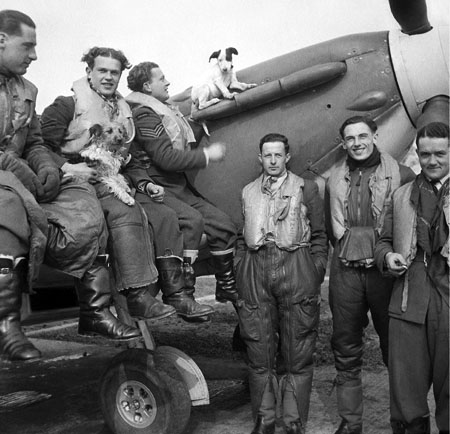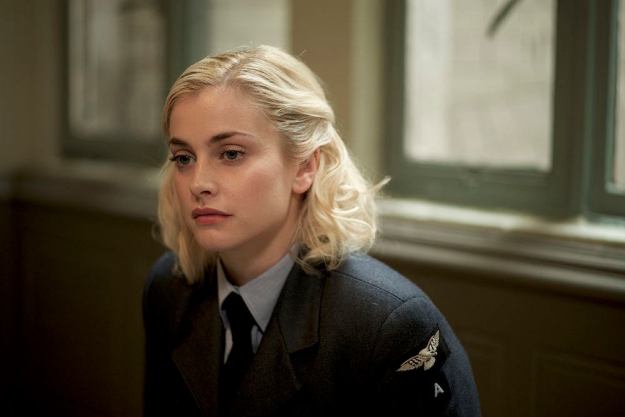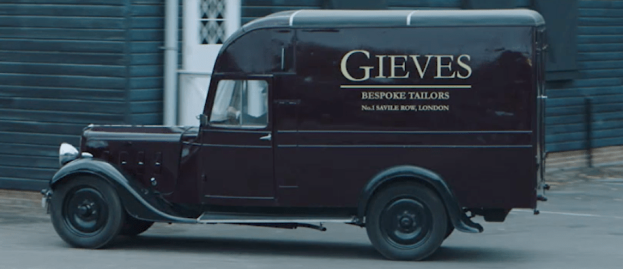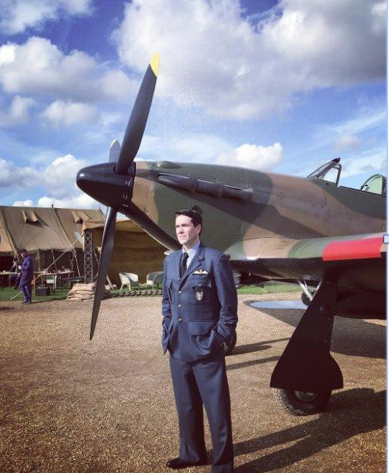I have heard or read a few things lately questioning the accuracy of war movies. On Radio 4’s Infinite Monkey Cage a member of GCHQ claimed that The Imitation Game (the Benedict Cumberbatch film about Bletchley Park and Enigma) got two things absolutely right: there was a Second World War and Turing’s first name was Alan. In The Times today bestselling historian Antony Beevor, discussing the Arnhem movie A Bridge Too Far, said: “All those war movies are dodgy in some way.”
This is of interest to me because, as the co-writer of the new WW2 film Hurricane, about the Polish pilots who fought in the Battle of Britain and beyond, I am well aware of the compromises with history that have to be made. Let me start by saying the broad brushstrokes of the narrative are absolutely true to life, that in summer 1940 the RAF did reluctantly allow a Polish squadron, 303, to be formed which, flying Mk 1 Hurricanes and not the pin-up Spitfire, managed to chalk up more victories than any other squadron in the Battle of Britain. And that they – in fact all the Polish armed forces – were treated very badly after the war.

However, some of the details do play a little fast and loose with the facts. There is a scene with gun cameras on 303 Squadron’s planes, when I am fairly sure they weren’t fitted until after the BoB. But gun camera footage always seems very real and visceral on screen, so in they went. The party at the Dorchester celebrating the Poles and their achievements, similarly, did not happen until after the main air battles of 1940 were done, but it was a decent shorthand to show how the Poles were feted by British society at the start of war. The hostess for that party was actually American, but I felt the introduction of a US character without explanation would be confusing.
Although the main players such as Jan Zumbach (Iwan Rheon), Witold “Cobra” Urbanowicz (Marcin Dorociński), Czech flyer Josef Frantisek (Krystof Hádek) and Canadian Johnny Kent (Milo Gibson) were historical figures, some of the supporting characters are fictitious.

The real 303 (Jan Zumbach, far right) with squadron mascot
One is designed to show the strain of constant air combat suffered by the over-worked pilots (including relying on Benzedrine to stay awake) and he is an amalgam of several individuals (not all of them Polish). Another is a Jewish character (who actually had a larger role in the original script). Although there were no Jewish pilots in 303, there were in some of the RAF’s other Polish squadrons. It seemed OK to move one across.
As in the movie, Josef Frantisek was a lone wolf who went off hunting solo, much to the annoyance of his colleagues. He died when, for reasons unknown, he flew into a hillside – not, having run out of fuel, the White Cliffs of Dover as in the film. But it does look a lot more dramatic.
The two main WAAF women, led by Stefanie Martini, are actually a fusion of four real individuals, with stories based on their memories as young girls thrust into the highly regimented, repressive world of the RAF. The plotting scenes, by the way, were filmed at the Battle of Britain Bunker in Uxbridge, which is a remarkable time capsule. It is open to the public and well worth a visit.

You might think the Poles’ success with the British women is exaggerated, but there is a persistent story that some RAF pilots sewed “Poland” patches on their tunics and spoke cod-Polish in clubs and bars to try and get some of the attention the foreigners were enjoying. (Sadly, those scenes got cut from the film.)
There are other instances of artistic licence. Appalled by the rag-tag appearance of his new recruits, Squadron Leader Kellett orders uniforms from his tailor, Gieves & Co (as actually happened). When the van turns up, Gieves’ address on the side is given as No 1 Savile Row. In fact, it was Hawkes that were at that address during WW2. Gieves & Hawkes didn’t shack up together at No. 1 until 1974. But the address on the van serves to show how much money Kellett had laid out of his own pocket. Appearances mattered as much to the RAF as the ability to shoot down Germans.

There is a scene when Zumbach uses his wing to play snooker with an ME-109, ramming the side and sending it crashing to earth. Unlikely? Maybe. Originally I had Zumbach lowering his plane on top of the stricken ME-109, forcing it lower and lower until it clipped the trees. But there is historical basis for these close encounters. In No Greater Ally: The Untold Story of Poland’s Forces in WWII, author Kenneth K. Kosdan states: “Faced with spent ammunition or malfunctioning guns, Polish pilots [in the Battle of Britain] were known to ram enemy bombers, chew off wing tips or tails with their propellers, or maneuver their planes on top of the Germans and physically force them into the ground or English Channel.”

Marcin Dorociński as “Cobra”
Having been one of those who shout things like “That’s not a Tiger tank!” at the screen for most of my life, I fully expect and probably deserve lots of flak about the above and more. But, after my experience with Hurricane, I now agree with Antony Beevor, who said in The Times: “You can nitpick your way through them for all the historical inaccuracies, but the trouble is that the needs of the movie industry and the needs of history are totally incompatible.”
And there rests the defence.
* Hurricane is released on September 7th in cinemas and on digital platforms

Excellent!
Sent from Mail for Windows 10
don’t worry.
>